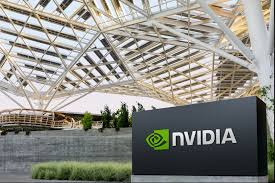Nvidia on Monday took the wraps off new products such as artificial intelligence to better train robots and cars, souped-up gaming chips and its first desktop computer, as it expounded upon its potential to expand its business.
At CES 2025, a major annual tech conference in Las Vegas, CEO Jensen Huang laid out how the world’s second-most valuable firm is bringing technology that powers its lucrative data center AI chips to consumer PCs and laptops.
He also introduced what Nvidia calls Cosmos foundation models that generate photo-realistic video which can be used to train robots and self-driving cars at a much lower cost than using conventional data.
By creating so-called “synthetic” training data, the models help robots and cars understand the physical world similar to the way that large language models have helped chatbots generate responses in natural language.
Users will be able to give Cosmos a text description that can be used to generate video of a world that obeys the laws of physics. This promises to be much cheaper than gathering data as it is done today such as putting cars on the road to gather video or having humans teach robots repetitive tasks.
Cosmos will be made available on an “open license,” similar to Meta Platforms Llama 3 language models that have become widely used in the tech industry.
“We really hope (Cosmos) will do for the world of robotics and industrial AI what Llama 3 has done for enterprise AI,” Huang said.
Bank of America analyst Vivek Arya said it remained to be seen whether the robotics push would significantly boost Nvidia’s sales.
“The challenge in our view is … making the products reliable enough, cheap enough and pervasive enough to spawn credible business models,” Arya said in a note to clients. “From that perspective robotics could remain another cool but niche opportunity such as metaverse or autonomous cars.”
Huang also unveiled new gaming chips that use Nvidia’s ‘Blackwell’ AI technology, which has helped propel its sales in data centers.
The chips, which Nvidia calls its RTX 50 series, aim to give video games movie-like graphics, especially in a field known as ‘shaders,’ which can help images like a ceramic teapot look more realistic by adding imperfections and fingerprint smudges to its surface.
The new chips can also help game developers generate more accurate human faces, an area where players are apt to notice even slightly unrealistic features. The chips will range in price from $549 to $1,999, with top models arriving on Jan. 30 and lower-tier models coming in February.



